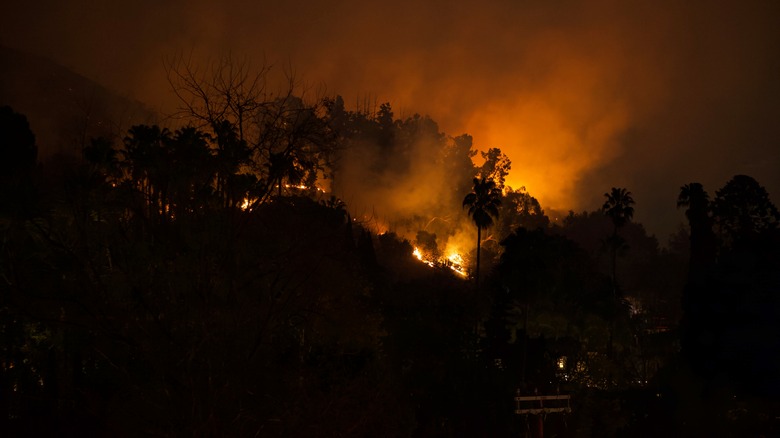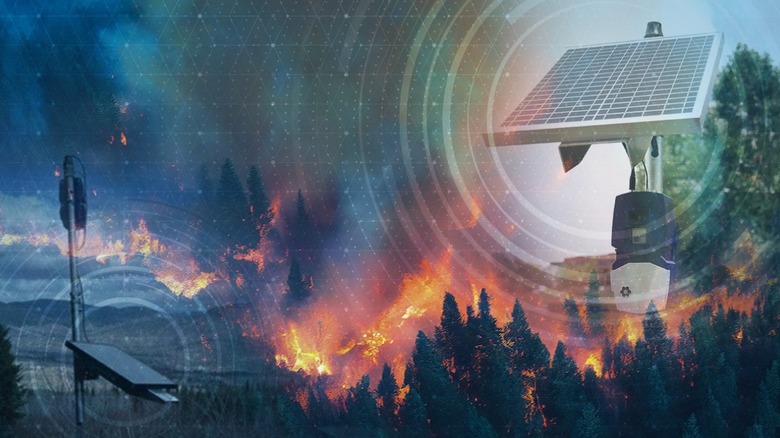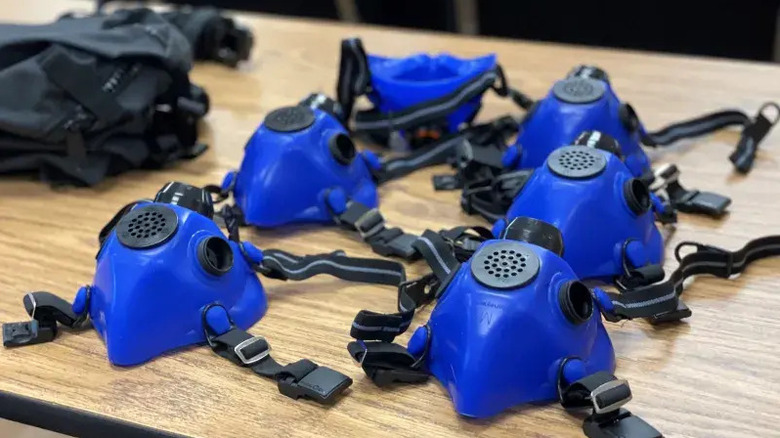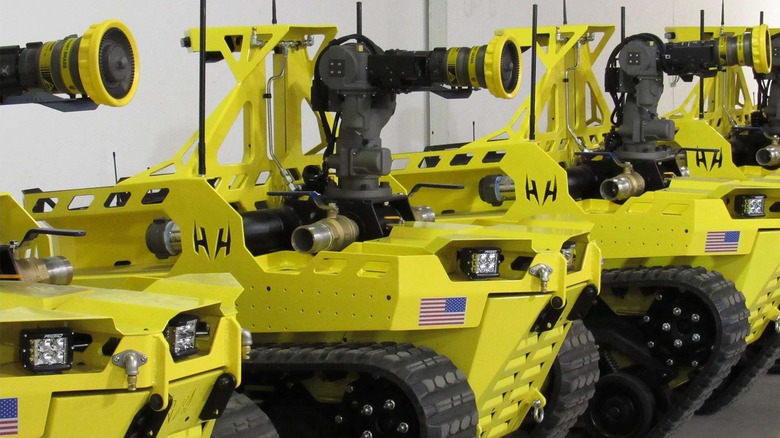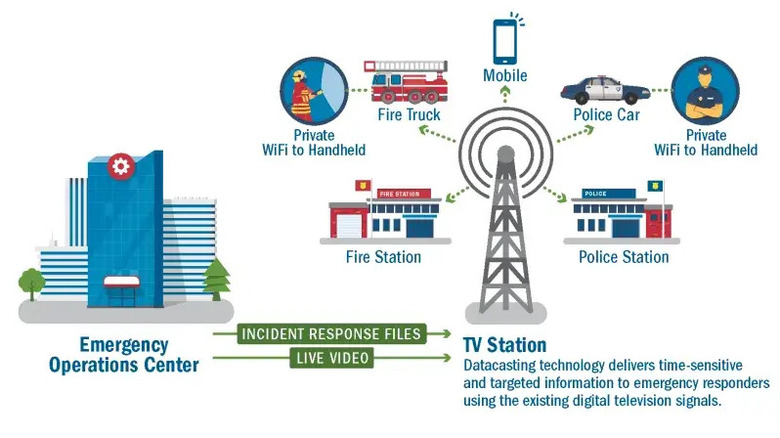How Technology Helps Fight The Flames Of California Wildfires
The 2025 Los Angeles wildfires have caused unprecedented damage, with an estimated 12,000 structures destroyed and over 100,000 people forced to evacuate – even though local firefighters, alongside firefighters from outside the state and even outside the country, have worked tirelessly to contain the blazes.
While we like to think we've managed to exert a degree of control over the environment, it can still bite back at us in devastating ways. No matter how advanced our technology becomes, we can't prevent natural disasters entirely, at least not yet. Since that goal is unrealistic, the focus is on using technology to mitigate disasters. Even if we can't stop a wildfire from forming, for instance, we can use the latest advancements to keep people safe and empower the firefighting effort.
For years now, the U.S Department of Homeland Security's Science and Technology Directorate, along with the Federal Emergency Management Agency, U.S. Fire Administration, and local businesses and fire departments, have been researching and developing counter-fire measures. This effort has yielded several promising new developments.
Tracking fire occurrence and progress with wildfire sensors
You can never be completely sure where and when a wildfire is going to ignite. California's state government does have measures in place to monitor for wildfire conditions, but it can take time before the alert goes up about a fire in progress. The best way to prevent a blaze from getting out of control is having systems to quickly catch it.
While basic sensors utilize simple cameras with thermal imaging, new sensors being deployed by Homeland Security and the Fire Administration can, for lack of a better word, "smell" fires. Every few seconds, these sensors scan for gases and particles that a fire would produce. If a quantity of these substances above the established baseline is detected, an alert immediately goes out to get a response underway.
In addition to catching a fire in progress, it's vital to have an accurate picture of the fire's current position and progress so firefighters can cut it off from populated areas and track its size. With the help of U.S. government agencies, California has been using lidar-powered satellites to generate round-the-clock maps of a fire's current status.
The information from these and other technologies is constantly sent to both fire professionals and on-the-ground first responders so they always know which way the fiery wind is blowing.
Equipping firefighters with the latest in protective gear
Firefighting is extremely dangerous, stressful work, which is why a big focus of firefighting R&D focuses on providing firefighters with the latest in protective equipment. First and foremost, they need next-generation respirators to ensure they can breathe safely while working.
The intense heat and high levels of smoke produced by a wildfire can make it difficult and unsafe to breathe even miles away, to say nothing of being right next to it. Sustained exposure to contaminated air can lead to illness later in life, as in the higher incidence of cancer in firefighters who responded to the World Trade Center attacks. This is why special respirator masks have been developed for firefighters' use, to protect them from the high concentration of toxic airborne particles a fire can launch.
Additionally, efforts have been made to upgrade firefighters' protective garments. While firefighters' jackets can shield them from the worst of the flames, sustained exposure to intense heat and humidity can lead to serious illness and injury. This is why there are specialized linings that pull moisture away from firefighters' skin, especially from their faces.
Drones and robots can approach a blaze when humans can't
No matter how well-equipped firefighters are, there are parts of a large wildfire where human beings simply cannot set foot. This includes particularly high concentrations of heat and flame, as well as areas that may have been damaged and rendered unstable by the fire. To extend the firefighting response beyond this line of safety, various forms of autonomous technology have been employed on the ground.
With the help of technological development company Howe & Howe and its Thermite robot, first responders can penetrate the worst parts of the fire without putting themselves at risk. These heavy-duty remote-controlled robots can be guided into a dangerous area, equipped with fire hoses to launch sustained blasts of water. The robots are also powerful enough to shove large debris or yank it out of the way with a winch, which can be a major boon for search and rescue.
California firefighters have also increased their use of aerial drones alongside their fleet of firefighting helicopters. While the intense thermal winds produced by the fires can make it difficult to fly drones close to the fires' centers, drones can be used for aerial reconnaissance of the blazes. With the help of camera-equipped drones, emergency response crews can keep an eye on the developing fire from all possible angles.
Keeping everyone in the loop with datacasting
Mitigating the damage caused by a wildfire isn't just about empowering firefighters and emergency crews — it's also about keeping civilians out of harm's way. The California government maintains several information routes to keep the public informed, including the CalFire website, alert texts, and regular local news coverage. Wildifre tracking apps for both iPhone and Android, such as Watch Duty, have also become a popular means to stay abreast of an active fire.
But public networks can only send out data and video so quickly, and sometimes a few seconds can spell the difference between life and death. In an effort to aid data circulation, Homeland Security, with the help of private and public broadcasting services, has found a way to speed up the distribution of information.
This system, known as datacasting, takes advantage of the unused bandwidth from broadcast TV signals to supplement data delivery. Utilizing these frequencies, broadcasting services can supplement the data needed for radio and cellular information dissemination. Data can be quickly sent to firefighters, police officers, news networks, and individual citizens' mobile devices without running out of bandwidth and stalling the process. In this way, everyone can receive immediate, vital updates on the fire's progress, whether they're on the scene fighting it or need to quickly evacuate.
